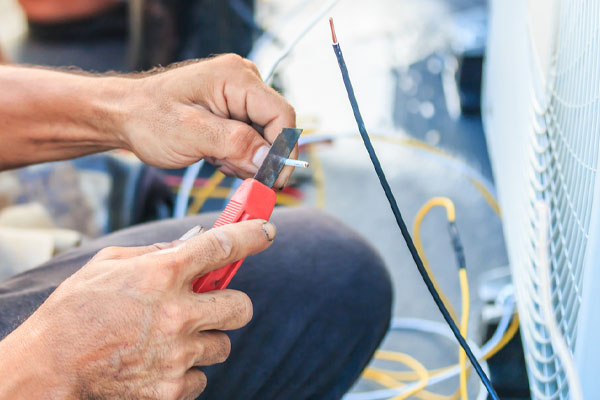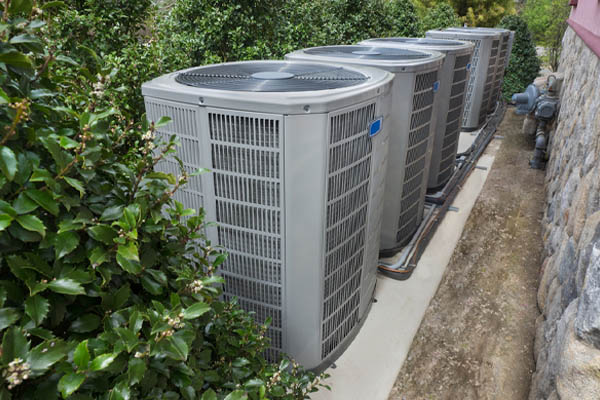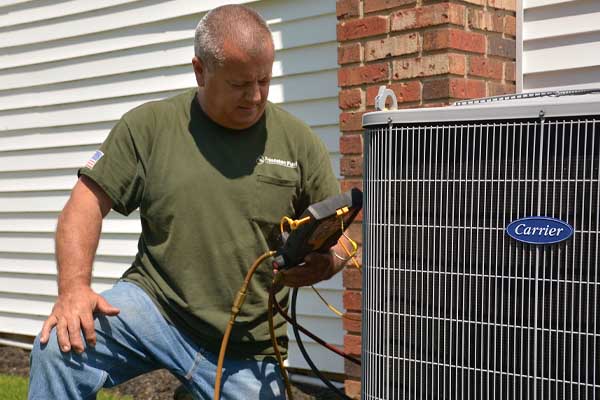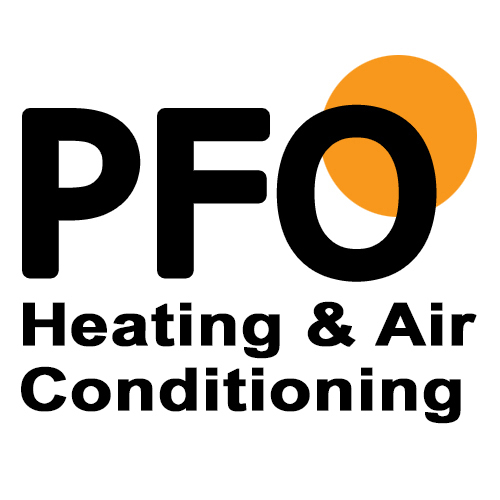
Air conditioners require breathing space. They function better and last longer when they have enough clearance and airflow. This is why HVAC contractors follow the industry standards during new air conditioning system installations. Homeowners should remain vigilant regarding their current outdoor air conditioning units as well. Landscaping and other things might get too close as time passes. Therefore, it is recommended that you check the perimeter throughout the year. The right amount of space required for outdoor AC unit depends on the situation. This article has all you need to know about air conditioner clearance.
Why It Is Essential To Have The Right Amount Of Clearance Around An Outdoor AC Unit
Contents
HVAC systems require the unobstructed flow of air in and around the outdoor unit. They will not get sufficient air without proper clearance. As a result, these issues can happen:
Reduced Air Conditioner Energy Efficiency

The cooling system works harder to compensate for the lack of air. This only results in the system consuming more energy which, in turn, spikes up your energy bills.
Poor Indoor Cooling
The air conditioner cannot produce adequate cooling for the home. As a result, occupants might still feel warm even though the cooling system is on.
Overheating Of Air Conditioner Parts
The hot air in the outdoor unit cannot escape rapidly. The air conditioner parts might overheat, causing damages that require HVAC repairs. It can even result in early equipment failure.
How Much Clearance Is Necessary Around An Outdoor Air Conditioning Unit?

The job of the outdoor air conditioning unit is to push the heat from the inside of the house to the outside. It can only effectively perform this task if the coils receive enough airflow. In general, there should be at least a one-foot clearing around the unit. Some manufacturers might recommend more clearance space. Check the owner’s manual or consult a professional HVAC contractor.
The various types of obstructions in the immediate surroundings can also affect the minimum clearance requirements. Here are a few of the most common concerns:
Construction Obstructions
These structures around your property include fences and walls. They can block the airflow if they are made of solid materials. It isn’t a good idea to place the outdoor unit near them as the air conditioner will only have a hard time cooling your home. The compressor could also get damaged because of the long-term restriction on the flow of air. There must be at least a two-foot clearance from these obstructions. This way, it is easier for the outdoor AC to draw air into the unit and cool the hot coil.
Landscaping Obstructions
Many people don’t like the outdoor air conditioning unit’s look. It could be because they feel that it clashes with the house’s design. As a result, they might try to hide the outdoor unit by adding potted plants or planting shrubs around it. It could definitely create a more pleasing appearance, but it only causes problems in your home. Restricting the airflow can lead to HVAC system inefficiency, damaged parts, and poor performance. It is important that there is a two-foot clearance around the unit. Make sure to trim the perimeter regularly as plants tend to grow quickly.
Mechanical Obstructions
Mechanical obstructions are the most problematic ones for the outdoor air conditioning unit. Some examples are kitchen exhaust, clothes dryers, and heating appliances’ vents. Airflow problems can happen when these are placed too close to the unit. It could also pose a risk, as in the case of gas vents and oil tank fill valves. A significant distance is important to ensure safety. Experts recommend a minimum of four feet, but the best option is still to keep them as far away as possible. HVAC installers can help you find the most fitting area they could put the units on in your property.
Outdoor Condensing Unit & Overhead Clearance

The top of the unit is also important. Once you have cleared the sides, look at the things above the unit. A lot of the current air conditioner models release hot air upwards. If this flow is blocked, the hot air ends up going back down, and the unit overheats. Common causes are debris like branches and leaves. Nearby shrubs also grow high enough to cover the top of the outdoor AC. At times, the culprit might be decks built above the unit. There might not be enough space between the top of the unit and the deck boards. Low roof overhangs and decorative covers can cause problems as well. The minimum recommendation is to have eight feet of clearance.
Spacing Between Two Outdoor AC Units
A professional HVAC installer should consider the distance between two or more outdoor units. The units shouldn’t be placed close to one another as this will impede each unit’s air intake. Some cases could even lead to one unit overheating if it sucks in the hot air from the other outdoor air conditioner. The air conditioning unit will strain in cooling the house under this condition. It is crucial that they have at least a four-foot space between them.
Spacing For An Outdoor Heat Pump
Heat pumps can effectively heat and cool your home in mild climates. The outdoor unit should have enough space as well. Homeowners need to be especially vigilant during winter as ice and snow can cover it. Ensure that the coils are always above the snowpack. Make it a habit to remove snow around the heat pump to ensure optimum system efficiency. Snow could sometimes get in the unit, so you need to clean it up. If you are unsure of what to do, contact your local, trusted HVAC technician to help you.
Site Inspection Before HVAC Installation

HVAC technicians will first visit the site to find the ideal location for the outdoor unit before installation begins. They will also familiarize themselves with the property’s layout and look for the possible challenges your system might face. This way, they can figure out the proper clearance on all sides. It will also let them design and install the system to achieve the best results.
Homeowners can inquire about the clearance needs before installation. They can learn more about it when they take a more active role and help ensure there is enough spacing. This will lessen the chances of costly errors and performance issues.
Conclusion
Having adequate air conditioning clearance is crucial to a successful HVAC system installation. Let a certified HVAC professional assist you, so you don’t have to worry about problems down the line. With their expertise, careful planning, and high-quality execution, you can be sure to receive the best possible outcome.
Call PFO Heating & Air Conditioning For Your Air Conditioning Requirements
 When you need superior HVAC services in the Greater Princeton, NJ area, call PFO Heating & Air Conditioning. We have only the best professionally certified technicians on staff, so you can be sure to receive excellent heating and cooling replacements, installation, repairs, and maintenance. All our friendly techs have the training, knowledge, and experience to service your HVAC system correctly.
When you need superior HVAC services in the Greater Princeton, NJ area, call PFO Heating & Air Conditioning. We have only the best professionally certified technicians on staff, so you can be sure to receive excellent heating and cooling replacements, installation, repairs, and maintenance. All our friendly techs have the training, knowledge, and experience to service your HVAC system correctly.
Our company offers one of the most affordable HVAC service prices in the locality. Our tune-up services improve your comfort and energy efficiency and reduce your cooling bills. We can recommend the best HVAC repair or replacement system while staying within your budget. Your satisfaction is our priority, so we back all of our work with a guarantee. Give PFO Heating & Air Conditioning a call today to schedule an air conditioner tune-up or service appointment. We offer free, in-home estimates.
Click here to contact us now or call us at (800) 253-9001 to find out more!



